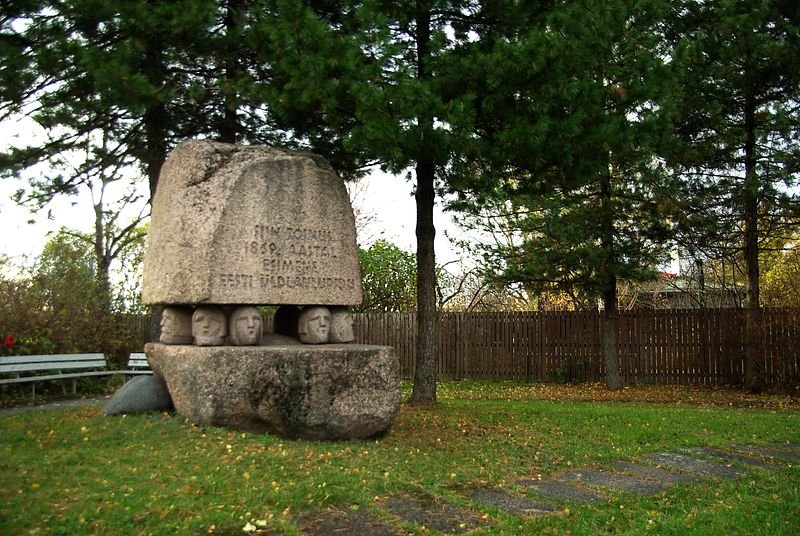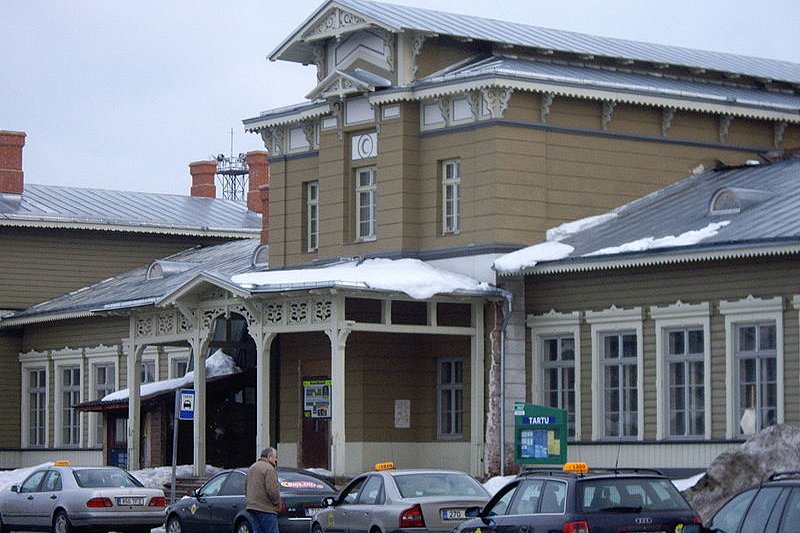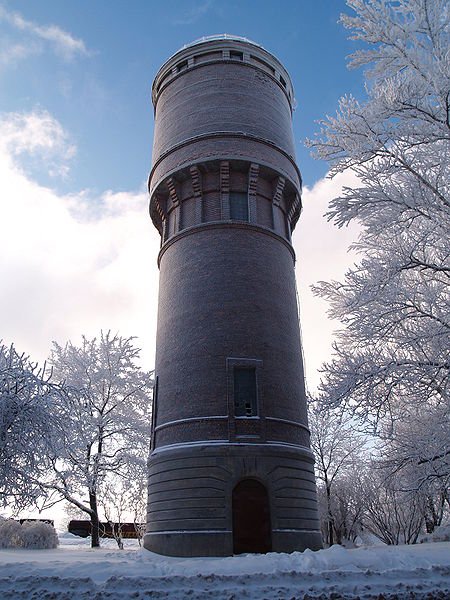 Monument in Tartu, Estonia
Monument in Tartu, EstoniaSource: https://commons.wikimedia.org/wiki/File:M%C3%A4lestuskivi_Eesti_I_%C3%BCldlaulupeole.JPG
Author: Ilme Parik

Tartu is the second largest city in Estonia. Located in the central southern part of the country, it is often regarded as the intellectual and cultural center of the country. Tartu is 186 km to the southeast of the capital Tallinn. It covers 38.8 sq km (15 sq mi) and has a population of 103,000 people.
Tartu experiences a humid continental climate. Due to its proximity to the Baltic Sea as well as warm air coming from the Atlantic, it enjoys a warmer climate than other places of this latitude. July is the warmest month here, when the average high temperature rises to 21.9°C (71.4°F). January is the coldest month, when the average low temperature drops to -10.5°C (13.1°F). Tartu receives the most rain in August, at 86 mm (3.39 in).
Traces of human habitation in the area around Tartu goes back to prehistoric times, although the first permanent settlement there is believed to have been established in the 5th century AD. Tartu was first mentioned in history in 1030, when the chroniclers of the Prince of Kiev wrote about his raid of the town.
 Kalmistu outcrop, Tartu
Kalmistu outcrop, TartuSource: https://commons.wikimedia.org/wiki/File:Kalmistu_outcrop1_2008.JPG
Author: Flying Saucer

By the 13th century, repeated assault by Germans exerted an influence on Tartu, with most of the upper-crust Tartu noblemen being of German blood, and its culture, religion, architecture all bearing German influence. In the 16th century, Tartu fell under the rule of the Grand Duchy of Lithuania, and from there, became part ofthe Polish-Lithuanian Commonwealth. This brought Polish influence to the city which last until the Polish-Swedish War of 1601, which brought Swedish rule and culture.
Tartu was under Swedish rule until 1721, when it was absorbed into the Russian Empire. Tartu underwent russification, which included the schools teaching in Russian and the city itself being renamed Yuryev. When Estonia gained its independence following World War I, the city was given its Estonian name, Tartu.
 Tartu Railway Station
Tartu Railway StationSource: https://commons.wikimedia.org/wiki/File:Tartu_jaamahoone.jpg
Author: DJ Sturm

The Estonian independence was shortlived, as the country was captured by the Bolsheviks and its independence renounced. From after the Second World War until Estonia regained its independence in 1991, Tartu was a closed city, forbidden to outsiders, as it was a sensitive military site for the construction of bombers. Since independence, the city has once again opened up to visitors.
Visiting Tartu
You can reach Tartu by flight, arriving at Tartu Airport (TAY), which receives regular flights from Riga and Tallinn. From the airport, you can take a shuttle bus to downtown Tartu for €3.There are regular bus services between Tartu and Riga. The journey takes four hours and costs €15.
 Tartu Water Tower built in the 1950s at the railway station
Tartu Water Tower built in the 1950s at the railway stationSource: https://commons.wikimedia.org/wiki/File:Tartu_raudteejaama_veetorn.JPG
Author: Ivo Kruusamägi

Places of Interest in Tartu
- Devil's Bridge
Bridge dedicated to Russian tsar Alexander I and commemorates three centuries of rule by the Russian Romanov family. - Estonian National Museum
This ethnological museum provides a look into Estonian culture with over a million artifacts. - Father and Son Statue
Bronze statue cast in 1987 but unveiled only in 2004 - KGB Cells Museum
Museum that offers a glimpse into the Soviet-era cells run by the secret police. - St John's Church (Jaani kirik)
Church dating back to 1330. It is an excellent example of brick Gothic architecture. Damaged during the Second World War, it has since been fully restored. - Statue of Karl Ernst von Baer
Statue honoring the most famous student from Tartu University and founder of modern embryology. - Tartu Art Museum
Museum holding some of the finest pieces of art in the country, including works by famous Estonian artists such as Elmar Kits and Ülo Sooster. - Tartu University
The intellectual heart of Estonia. The main building, built in 1809, is the finest example of Neo-Classical architecture in Estonia. - Toomemägi
Hill in Tartu dominated by its cathedral. - Town Hall
The present town hall dates to 1786. It was designed in the Classicist style which was in fashion during its construction. - Town Hall Square
The main public square in Tartu. It slopes downwards, with the Town Hall on the high side. - University Observatory
Observatory built in 1820. It has the most powerful achromatic telescope in the world.
 Latest updates on Penang Travel Tips
Latest updates on Penang Travel Tips
 Map of Roads in Penang
Map of Roads in Penang
Looking for information on Penang? Use this Map of Roads in Penang to zoom in on information about Penang, brought to you road by road.
Copyright © 2003-2025 Timothy Tye. All Rights Reserved.

 Go Back
Go Back